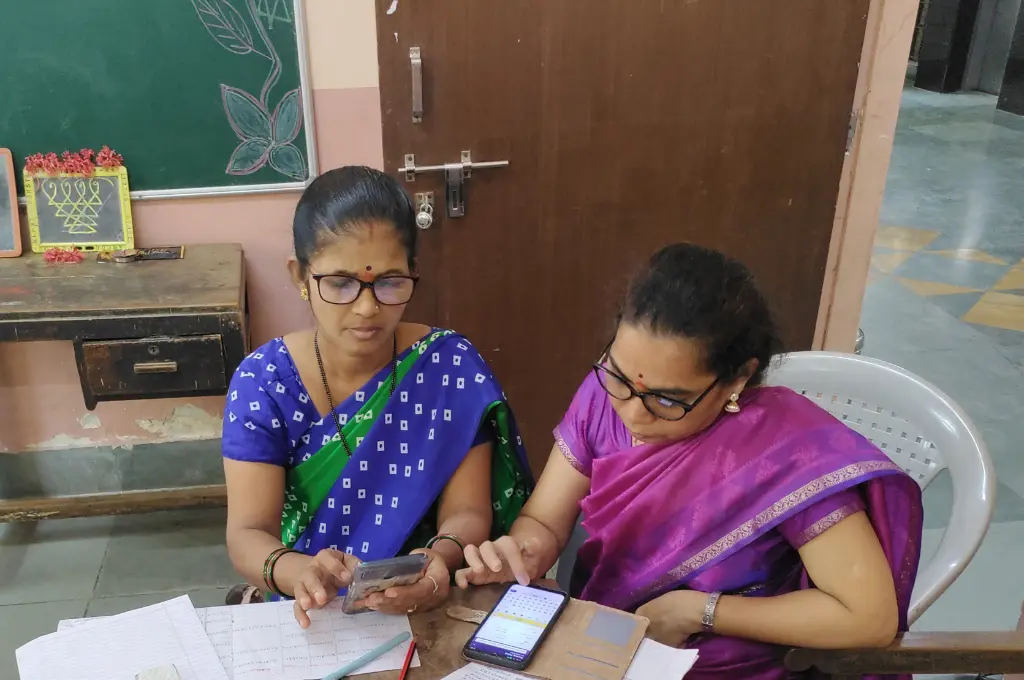As technology is becoming more useful, pervasive, and robust it promises new possibilities to nonprofit leaders for their organisations and the work they do. It can help them improve the impact of their work, save costs, and get better organised. It is therefore crucial that nonprofit leaders think about technology seriously, and pragmatically.
Some nonprofit organisations have successfully been employing information technology towards:
- Data management for monitoring and evaluating their programmes
- Digitising fieldwork to improve the effectiveness and efficiency of programmes
- Automatically creating reports for funders based on data on activities
- Training and assessing their own staff and government providers
- Raising funds online for the communities they work with
- Investing in domain specific technology such as patient medical records, school management, and so on
While the technology is available for doing all of these things, tech projects are still fraught with failure and underwhelming outcomes. Hence, before nonprofit leaders embark on technology projects, they must get a clear understanding of four key areas:
- The benefits that can be derived from technology
- The maturity of the technology being employed
- Their organisational capacity
- The total cost of ownership
1. The potential benefit of the tech they are employing
The simplest and most effective way to understand potential benefits is to discuss them with other organisations that have been using the tech, in order to get a better sense of how much it has helped them.
It is also important to not depend too much on the advice of technology providers in this regard. Most technology providers do not understand the social sector all that well, since their primary business is with for-profit organisations. Plus, their incentives are often different from those of the nonprofit.
Technology genuinely holds a lot of promise for social sector organisations, but it demands a methodical approach to bring the promise to bear.
Nonprofit organisations on the other hand can communicate with each other much more effectively, as they are often similarly structured, face similar issues, and have a similar cohort of people working for them. For example, a reputed public health organisation in Maharashtra was thinking of investing in a mobile app-based solution for ASHA workers. Before doing this, they visited at least three to four organisations who had gone down this path already. An important result of this effort was that they understood that the mobile app, no matter how simple, has a learning curve. And so they chose a much slower and longer path on their own—they didn’t require advice for us, as tech experts, to make this call.

In my earlier years of working in the social sector, we implemented a rather comprehensive system at a few hospitals. It failed after some time, because we had deployed too advanced a system and the hospital simply couldn’t keep up. Had they checked with their peers prior to going down this route with us, they would have perhaps reigned us in; and, we might have ended up with a more effective solution in the end.
2. The maturity of the technology employed
Technologies that do not have a mature ecosystem and a user adoption track record pose a very high outcome risk. Unless this risk has the potential for a significant reward in terms of impact, I would advise against using that tech.
We know from experience that adopting newer technologies has not worked out in the social sector, let alone providing a significant reward for the risk taken. For instance, when SMS as a service arrived in India, several nonprofit organisations began running ambitious community facing projects, using SMS. It was only later on that they learned that a very small percentage of the communities they served, could open and read text messages. Even after several years, text as a medium to reach people—especially those who may come from marginalised backgrounds in India—is still in its infancy. (The experience in Africa has been very different, but in India it still remains an issue as a communication channel.)
Due to the fast pace of evolution in technology, there are often new opportunities available. It is important to understand though that not all of them become useful. Newer technologies have their proponents and are constantly looking for places to experiment. However in such experiments, the host (ie. the nonprofit organisations) often do not learn much if the process fails. And we have seen that in most cases of failed technology implementations, the nonprofits in fact blame themselves for being too ‘technologically backward’. This analysis helps no one, as the same technology is failing elsewhere too, for similar reasons.
In most cases of failed technology implementations, the nonprofits in fact blame themselves for being too ‘technologically backward’.
The primary reason why cutting edge technology often doesn’t work for nonprofit organisations, is that while the technology may be available, the ecosystem is still missing. A healthy ecosystem for a tech solution includes a choice of products; a number of service providers; integration capabilities; learning material; and a predictable cost of ownership. And if the technology is successful, this ecosystem develops over time.
This poses the question: How do we identify mature technologies then? The answer again is simple: Look for what is being adopted in businesses (especially small businesses), with consumers, and of course by other social sector organisations. Since the service providers to these nonprofits usually serve businesses too, they are the best source of information. For example, quizzing your accountant will tell you the extent to which cloud-based accounting software is being adopted in small businesses.
3. Your organisational capacity to adopt technology
Without organisational capacity, the technology cannot help much. This topic is best understood via an example.
Let us imagine that your neighbourhood supermarket launches an online shop, from which its customers can order items for home delivery. It turns out that the software itself is the easiest part; it even provides all the features the shop wants. But, it ends up being insufficient anyway.
- Customers order items but they are not in stock, as the stock-keeping process was originally designed for in-person shopping, where customers don’t buy what they do not find.
- The delivery time is unpredictable, because the store doesn’t have enough staff to monitor online orders and deliver them.
- The shop ends up delivering orders which were cancelled.
In order to benefit from technology, organisational leaders have to assess whether the human system around technology can also be upgraded to translate tech deployment into real benefits. This is the most common reason why technology fails to deliver for organisations.
Usually, tech requires a significant change in organisational processes. Yet, it is common to see many processes made redundant by technology continuing because of confusion, and a lack of understanding, communication, and change in behaviour.
In order to bring in all the organisational changes that are required, leaders must get involved actively, since they have the technology vision, and also the influence over their teams. A few simple things that leaders can do following technology deployment are:
- Examine the new process regularly and interrogate users on how they are using the system, and whether they are in fact getting all the benefits it promises.
- Organise mandatory training sessions for people.
- Communicate and evangelise the new tech regularly.
- Lastly, but most importantly, switch to the newer technology themselves.
4. The total cost of ownership
Let’s build on the shop example from above. Let us imagine that the leadership at the shop hire and train additional staff to solve the problems they are facing with implementing the new tech. Now, their cost goes up, and their prices are no longer competitive. This has to do with the total cost of ownership, which is often not apparent in the beginning. Accounting for this in advance may seem wasteful, and like an additional burden. This happens mainly because:
- Organisational change requires a commitment of time, and may require different skill sets.
- Technology begets technology. Once an organisation starts using tech, additional needs are identified by people who use the tech solution for their work. In the use case of the shop, the shop manager may want to verify that the delivery is indeed being completed, and that the person in charge of delivery is not giving the items to their friends, for instance. Or, that the customer is not falsely claiming that the order was not delivered to them. So, the shop may require a verification from the customer, like a One Time Password (OTP) that they provide in order to log the delivery as complete. This is a good situation to be in though, since the demand for such improvements often come from the potential value seen by users.
It’s important for organisational leaders to estimate the total cost of ownership and accordingly decide upon the extent of technology adoption (if at all). The service providers can help with this, as well as other organisations that may have employed the tech solution in question. Usually, assuming 10-20 percent additional cost every year, is a good way to think about this.
Three crucial decisions
Once an organisation decides to embark on a technology project, there are important decisions to be made.
1. Technology partner or one-off service provider arrangement?
Not all technology projects are the same. They span a spectrum, ranging from utility on one end to being strategic on the other. And so they should be treated differently in how they are executed. For instance, a reporting management information system (MIS) is a utility, and can be done via a fixed period contract with a software service provider. These are less risky projects.
The strategic technology solutions are those that will be used by a large percentage of users in an organisation, their service delivery is critical to the functioning of the solution, and they can have high impact on the organisation’s productivity or improve the quality of the service the organisation is providing. Examples of such tech solutions would be an electronic medical record system for a hospital, a data collection tool for a research organisation, and a job-aid application for frontline health workers.
Executing such projects with one-off contracts don’t work because they are technically more difficult and such technology systems are required to evolve over time with underlying programmes. In such cases the organisations should look for the right tech partner who can not only develop such systems but also act as a trusted advisor.
2. Custom solution or a generic product?
While each nonprofit is unique in some way, technology requirements usually fall in certain ‘categories’, as mentioned at the start of this article. In each category there are generic products, such as SurveyCTO, Avni, or CommCare for data collection; Odoo and ERP Next, for Enterprise Resource Planning (ERP).
Organisations need to decide whether to go with these products or develop their own. The latter is of course more expensive and risky to do. It also burdens the nonprofit with maintainance in the long run and with finding internal or external resources to do so. Generic products on the other hand may solve these issues, but the trade off is that organisations must mould their requirements to fit the product. This works most of the time, but on the margins, it may not. For instance, a generic product may not use your organisation’s exact terminology, or it may not provide workflows specifc to your organisation.
3. Incremental approach or going all-in?
Lastly, it’s human nature to yearn for a complete solution before starting to use it. While this may look natural (eg. we don’t move into half-built houses), with information technology this doesn’t have to be the approach. Given the number of uncertainties, many of which I have described here, starting small by solving one or two problems, allows organisations to dip their toes in, and develop confidence. This is one the biggest advantages of software, and it must be leveraged. A good technology partner can help with arriving at the right roadmap and plan.
Technology genuinely holds a lot of promise for social sector organisations, but it demands a methodical approach to bring the promise to bear.
This is the first article in a 8-part series which seeks to build a knowledge base on using technology for social good.
__
Know more
- If you want to read more on technology for the social sector, check out Samanvay Foundation’s blog.
- Read Geek Heresy to develop a clear-eyed view of the possibilities of technology in the social sector.






